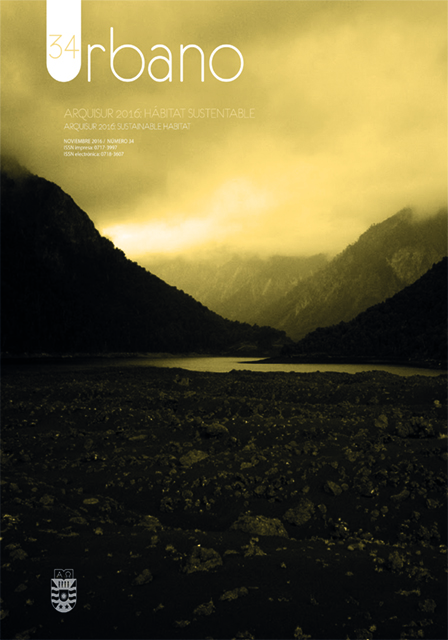Urban planning and design instruments to promote pedestrians in cities – A comparative study between Chile and Germany
DOI:
https://doi.org/10.22320/07183607.2016.19.34.5Keywords:
pedestrian mobility, urban design, road planning, walkabilityAbstract
Walking is, along with cycling, the most sustainable, democratic and healthy mode of transport within a city (Tonucci, 2004; Gehl, 2011). For this reason, walking should be promoted in cities through planning and urban design. In fact, in Chile, the recent National Urban Development Policy (2014) sets out the promotion of pedestrian traffic as an urban mobility objective. This research analyzes the deficiencies and challenges of urban planning and street design in Chile by carrying out a comparative analysis of instruments and urban design standards in Germany that promote pedestrians in cities. Thus, best practices and planning tools such as minimum standards, design guidelines, traffic calming and participatory processes among others, are analyzed in depth using case studies that promote walking. This paper concludes with a proposal of urban design instruments, recommendations and standards to promote the development of pedestrian-oriented streets in Chile and hence encourage more sustainable urban development.
Downloads
References
BERDING, U., KULINSKI, O. y SELLE, K. Städte als Standortfaktor: Öffentlicher Raum. Bonn: Bundesamt für Bauwesen und Raumordnung, Werkstatt: Praxis (2), 2003.
CERVERO, R. y KOCKELMAN, K. Travel Demand and the 3Ds: density, diversity and design. Transportation Research Part D: Transport and Environment. 1997, 2, pp. 199-219.
GEHL, J. (2011). Life Between Buildings. Washington: Island Press.
HERRMANN, G. 2006. Instrumente zur Planung und Gestaltung des öffentlichen Straßenraumes in Deutschland und deren Anwendungschancen in Chile. Berlín: TU Berlin, Fakultät VI Planen, Bauen, Umwelt (Herausgeber), Universitätsbibliothek der TU Berlin, Digitales Repositorium, 308 p. Disponible en: URL: http://opus.kobv.de/tuberlin/volltexte/2005/1174.
HERRMANN, G. y VAN KLAVEREN, A. Disminución de la participación de la población en organizaciones sociales durante los últimos 13 años en Chile e implicaciones para la construcción de una política de planificación urbana más participativa. Revista EURE. 2016, 42 (125), pp. 175-203.
HILL, J., WYATT, H., REED, G. y PETERS, J. Obesity and the environment: Where do we go from here? Science. 2003, 299 (5608), pp. 853-855.
JACOBS, J. The Death and Life of Great American Cities. Michigan: Random House, 1961.
MINISTERIO DE VIVIENDA Y URBANISMO Y PNUD. Política Nacional de Desarrollo Urbano. Ciudades Sustentables y Calidad de Vida. MINVU: Santiago, 2014.
MORGAN, A.L., TOBAR, D.A. y SNYDER L. Walking toward a new me: the impact of prescribed walking 10,000 steps/day on physical and psychological well-being. Phys Act Health. 2010, 7, pp. 299-307.
STRONEGGER, W., TITZE S. y OJA, P. Perceived characteristics of the neighborhood and its association with physical activity behavior and self-rated health. Health & Place. 2010, 16, pp. 736–743.
VALENZUELA MONTES, L.M. y TALAVERA GARCÍA, R. Entornos de movilidad peatonal: una revisión de enfoques, factores y condicionantes. Eure. 2015, 123, pp. 5-27.
WILLIAMS, P.T. y THOMPSON, P.D. Walking Versus Running for Hypertension, Cholesterol, and Diabetes. Arteriosclerosis, Thrombosis, and Vascular Biology. 2013, 33, pp. 1085-1091.
MINISTERIO DE VIVIENDA Y URBANISMO. REDEVU, Manual de Vialidad Urbana, Recomendaciones para el diseño de elementos de infraestructura vial urbana. Santiago, Chile: MINVU, 2009.
MINISTERIO DE VIVIENDA Y URBANISMO. Ordenanza General de Urbanismo y Construcciones. Santiago, Chile: MINVU, 2010.
TONUCCI, F. La ciudad de los niños: un modo nuevo de pensar la ciudad. Madrid: Fundación Germán Sánchez Ruiperez, 2004.
Downloads
Published
How to Cite
Issue
Section
License
Copyright (c) 2016 Marie Geraldine Herrmann Lunecke

This work is licensed under a Creative Commons Attribution-ShareAlike 4.0 International License.
The content of articles which are published in each edition of Habitat Sustentable, is the exclusive responsibility of the author(s) and does not necessarily represent the thinking or compromise the opinion of University of the Bio-Bio.
The author(s) conserve their copyright and guarantee to the journal, the right of first publication of their work. This will simultaneously be subject to the Creative Commons Recognition License CC BY-SA, which allows others to share-copy, transform or create new materials from this work for non-commercial purposes, as long as they recognize authorship and the first publication in this journal, and its new creations are under a license with the same terms.![]()























